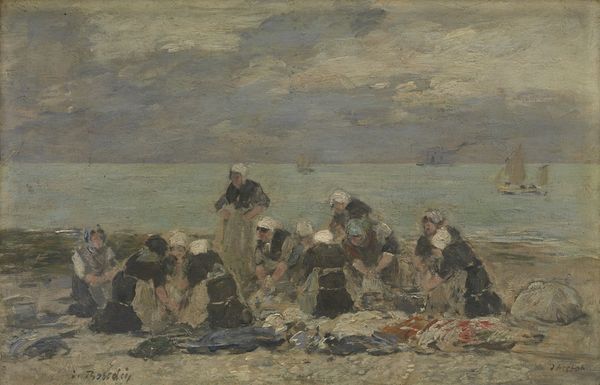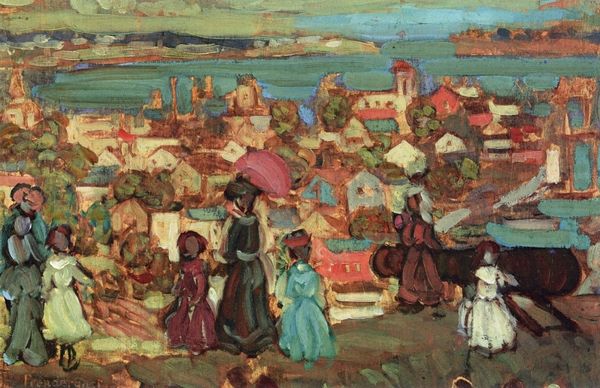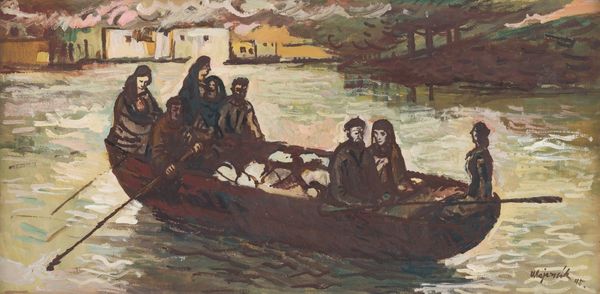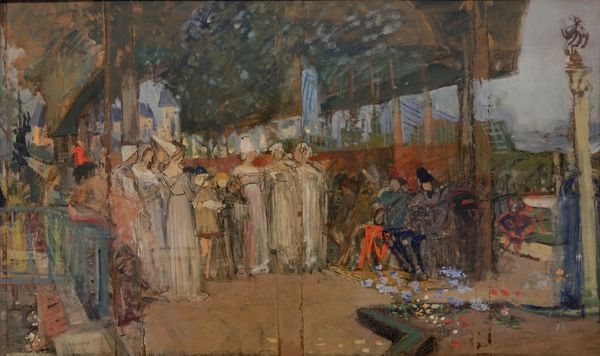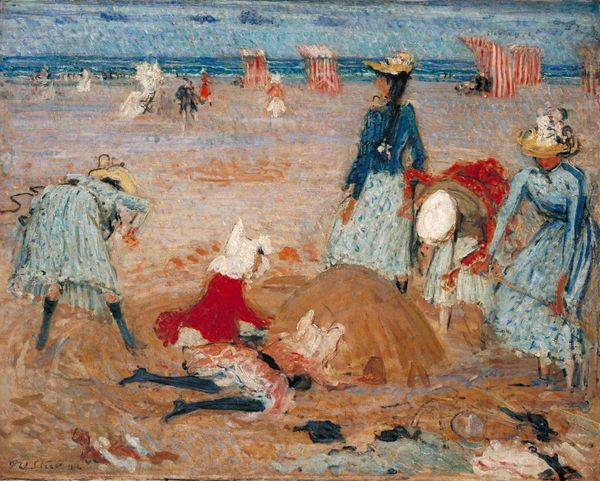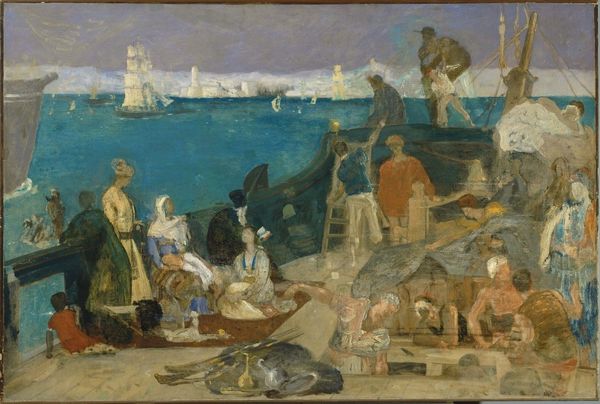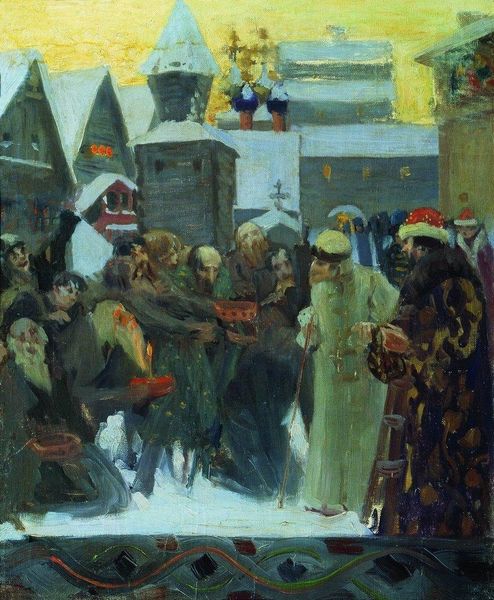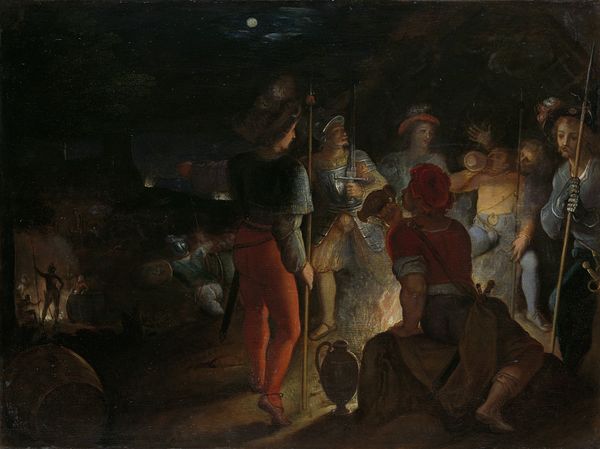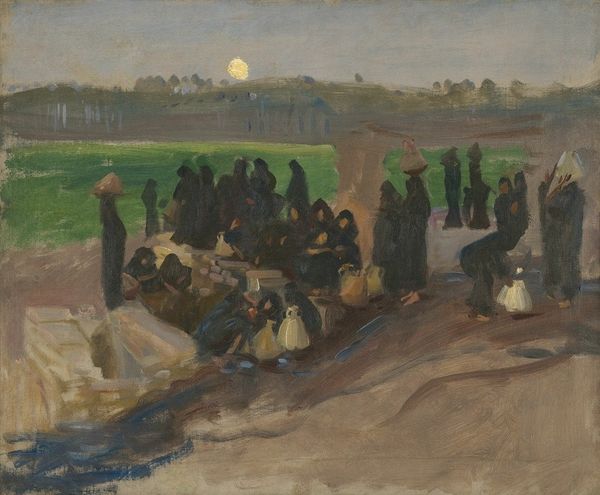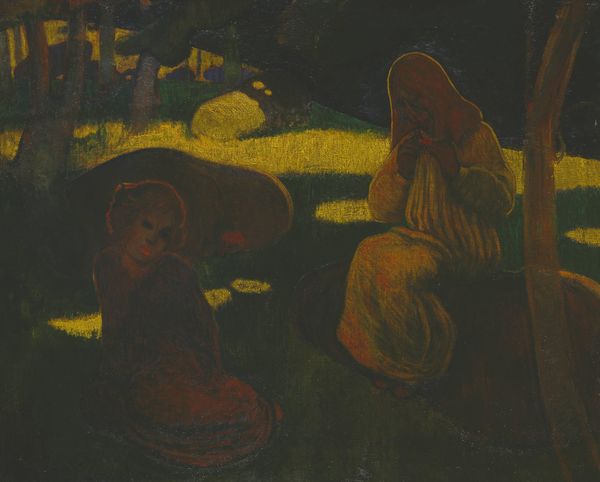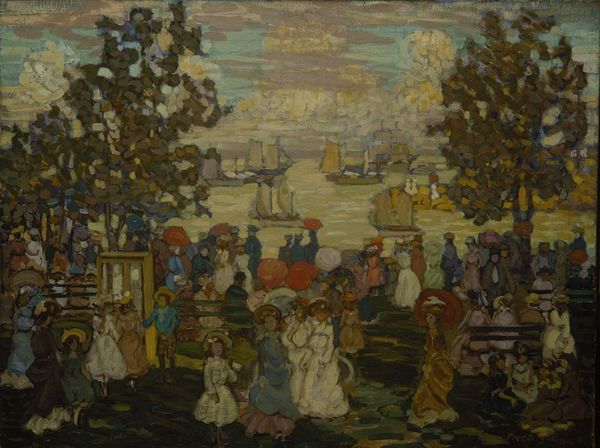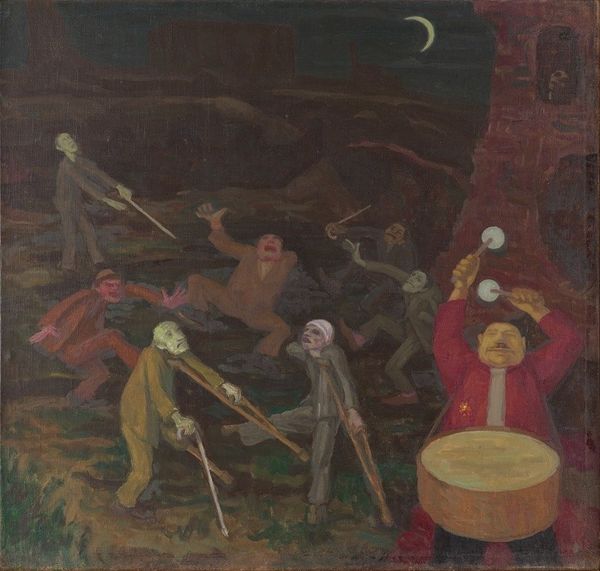
painting, oil-paint
#
painting
#
oil-paint
#
landscape
#
expressionism
#
naive art
#
painting art
#
genre-painting
Copyright: Public Domain: Artvee
Curator: Welcome. Before us hangs Wassily Kandinsky's "Erinnerung An Holland," or "Memory of Holland," painted in 1904 using oil paint. Editor: It’s a striking scene! I’m immediately drawn to the brown palette, almost sepia-toned, and how the figures seem almost swallowed by their garments. It's as though we are looking back through time. Curator: Absolutely. Considering its context, let's not forget that Kandinsky spent time in Holland in the early 1900s. This painting offers a look at how cultural memories operate—his portrayal reflects an attempt to reconstruct and possibly idealize the foreign culture he encountered. What about the symbolism of the clothing, or the way individuals are grouped? It feels purposeful. Editor: Indeed. Kandinsky used readily available materials; the canvas itself speaks of his practical artistic choices, driven by what was affordable and attainable during that era. Furthermore, his brushwork is economical, but captures much with simple means; it’s less about depicting and more about hinting at texture and volume, and in relation to the production costs for an artist during that period. Curator: This is where the historical perspective is indispensable. The painting hints at underlying currents within society, with the depiction of a shared national identity. It could reflect contemporary conversations surrounding ethnicity, tradition, and perhaps even some subtle social criticism embedded within its genre painting context. How else might the figures hint at deeper socio-political narratives? Editor: Think about the labor involved in their dress. Each item, from the lace on the bonnets to the cut of the men's jackets represents a significant amount of handwork by women in that particular area, as it’s not only depicting their presence, but also their productive and reproductive roles within the rural society of Holland. Even down to the source of oil, it must be investigated how the raw material shapes how people can or cannot do things, depending on available material properties! Curator: An intriguing point! By recognizing its artistic method alongside an evaluation of its historic backdrop, "Memory of Holland" prompts inquiries not only regarding Kandinsky's personal narrative but additionally provides opportunities to evaluate the complexities of community. Editor: Right—to see it not just as art but also as a result of human endeavor, and what such endeavor can enable culturally as an outcome: pretty radical indeed, after our deep-dive today.
Comments
No comments
Be the first to comment and join the conversation on the ultimate creative platform.

